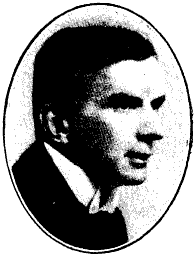Axel Törneman
| Axel Törneman | |
|---|---|

Axel Törneman, in Nordisk familjebok
|
|
| Born |
Johan Axel Gustaf Törneman 28 October 1880 Persberg, Värmland, Sweden |
| Died | 26 December 1925 (aged 45) Stockholm |
| Nationality | Swedish |
| Education | Värmland School of Art, Kunstakademie München, Adolf Hölzel, Académie Julian |
| Known for | Modern art, Painting; graphic design |
| Movement | Modernism, Expressionism |
| Spouse(s) | Gudrun Høyer-Ellefsen |
Johan Axel Gustaf Törneman (28 October 1880 – 26 December 1925) was one of Sweden's earliest modernist painters. Born in Persberg, Värmland, in Sweden, he grew to work in several modernist styles, was one of the first Swedish expressionist artists, and became a part of the international avant-garde in art after embracing more abstract art styles in Germany and France that were evolving there during the early 1900s. He created his most famous paintings, Night Café I and II, and Trait, in France in 1905. These night café paintings, made from studies in the Place Pigalle, and in other nightclubs popular with artists such as Café du Rat Mort (Dead Rat Café), are seen as two of Swedish modernism's most important works, and are considered breakthrough work of Swedish modernism.
Törneman gained international stature in 1905 at the Salon d'Automne in Paris with Trait I, and with his Narragansett Café in 1906. He went on to paint murals and decorations in public buildings such as the Royal Institute of Technology (KTH) and , and other Stockholm buildings such as Norra Latin, Ragnar Östberg's Östermalms läroverkl, and the second chamber in the . Törneman's paintings were recognized with a gold medal at the U.S. Panama–Pacific International Exposition, in San Francisco in 1915. Törneman died in at age 45 after only a further decade of creative work.
Johan Axel Gustaf Törneman was born on 28 October 1880 in Persberg, Värmland Sweden, the son of John Algot Törneman, an engineer at an explosives factory; his grandmother was the cookbook author Gustafva Bjorklund.
Törneman studied at Värmland School of Art in Göteborg in 1899 under Carl Wilhelmson, then toured the Nordic lands for a short while before traveling to study on the European continent in the years 1900–1905. In Europe, he first studied at the Kunstakademie München (now the Akademie der Bildenden Künste München), then went to Dachau to study under Adolf Hölzel. In Munich he was influenced by the Art Nouveau movement and symbolism, Arnold Böcklin, Franz Stuck, and others.
...
Wikipedia
